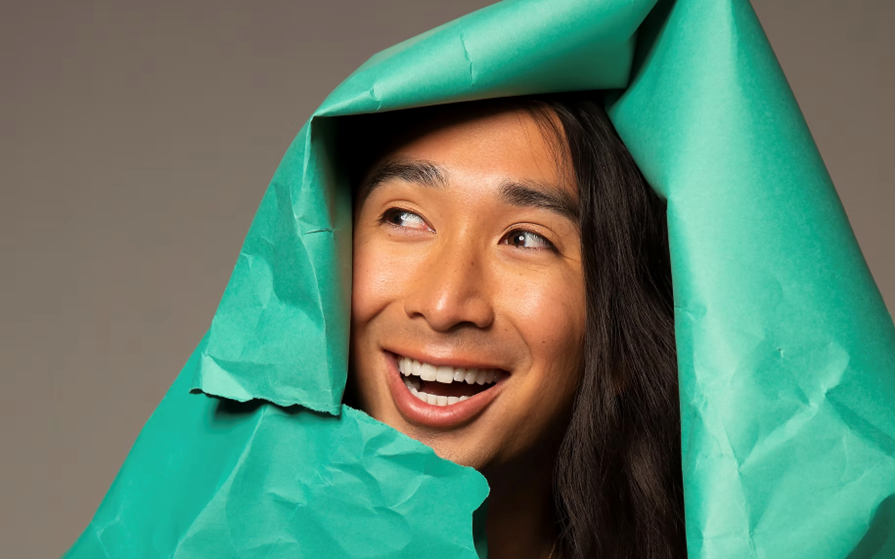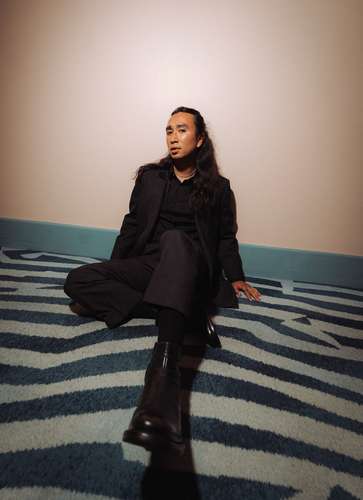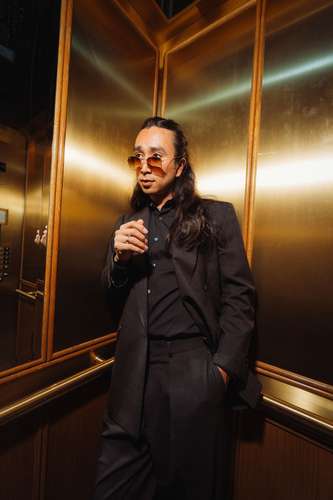The Common Thread with "Ghosts" star Román Zaragoza
Actor, director, and producer Román Zaragoza can be seen starring in CBS’ comedy series “Ghosts.” Born in New York City, Zaragoza was raised in a melting pot of culture. His father, acclaimed actor Gregory Zaragoza and mother, college business professor Shirley, supported Zaragoza’s love of theater, film and television from a very young age.
Q: Do you think fashion can be a tool for protest or cultural commentary—and have you used it that way?
A: Absolutely. My love for secondhand shopping has become both a form of self-expression and a protest against fast fashion. I discovered this passion when I moved to Oregon at 21 and fell in love with a local thrift store, Three Penny Mercantile in Ashland, where I lived for three years doing theater. Thrifting let me explore my style without breaking the bank, while supporting a more sustainable fashion cycle.
When I began doing press for Ghosts, I decided to wear secondhand pieces on red carpets to show that preloved clothing can be just as event-ready as designer. I even started making videos showcasing these looks on Instagram and TikTok, which has grown into a big part of my social media presence.
Q: How do you balance creativity, self-expression, and ethical consumption in an industry that often prioritizes flash and fast trends?
A: Secondhand shopping frees me from the pressure to chase trends. Thrifting feels like acting—you can prepare, know what you’re looking for, but once you’re in the store, or on set, it’s all about being present and improvising. Perfection goes out the window, creativity kicks in, and you adapt to what’s in front of you.
I love art forms where there’s no “right” answer—you just create something that sparks something in you. That’s what keeps fashion exciting for me.
Q: How do you curate your style? Are there certain stories, eras, or makers you’re drawn to when buying vintage, consignment, or secondhand?
A: My style is eclectic—I love sharp British tailoring, a good Western look, and lately, contemporary Japanese streetwear. I’ve been spending more time in Japan, where my girlfriend’s family lives, and the secondhand scene there is next-level. In some neighborhoods, there are as many vintage shops as new clothing stores.
Being part Japanese, the sizing works better for me, and I always return home with an extra suitcase of thrift treasures. My style evolves with the places I travel, and Japan has been a huge influence lately.
Q: Secondhand September is about rethinking how and why we shop. How do you connect with the idea of slowing down consumption—in fashion or beyond?
A: I’ve moved over 20 times in the past decade, so I’ve learned to limit my belongings. That said, I love clothes—so I keep my closet in constant rotation. If something no longer sparks joy, I sell or donate it, then shop secondhand to fill the gaps. It’s a cycle that keeps my wardrobe fresh without adding waste.
Q: Do you have a favorite piece in your closet that tells a story about sustainability or resilience?
A: One of my favorites is a gray Burberry double-breasted suit I found at a Second Street in Daikanyama, Tokyo, for about $80. It didn’t fit perfectly —the sleeves were short and it was a little baggy—but I took a chance. After tailoring it at Alts in Williamsburg, it became one of my favorite event looks that I wore at a CBS event last May. It reminds me that the right tailor can transform a find, and that thrifting abroad makes for the best souvenirs.
Q: What gives you hope about the future of fashion—and what role do influencers, artists, and secondhand lovers play in shaping it?
A: It’s exciting to see more designers and brands embracing upcycling and sustainability. A favorite of mine is The Thirteen Club, which started by selling vintage and upcycled pieces and now also makes small runs of new, high-quality items. I’ve bought from both sides of their work, and the quality is incredible.
Secondhand and vintage have never been more mainstream, and think we can keep pushing the conversation toward creativity and conscious consumption.








